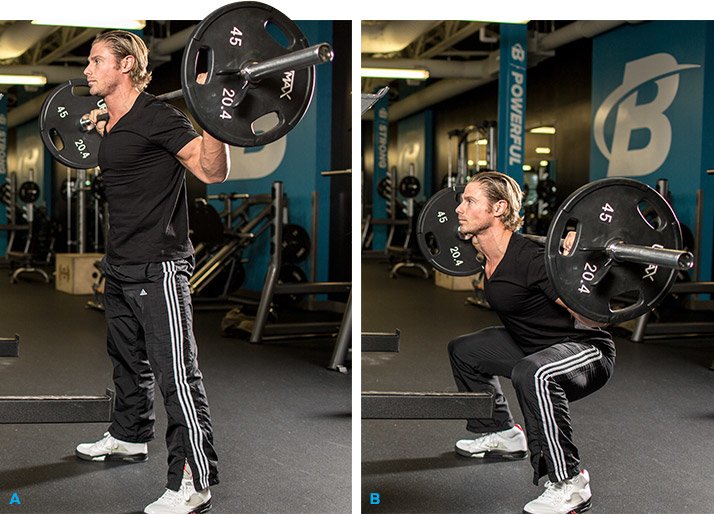
Marc Megna's Lifting Lessons: Barbell Back Squat
Don't squat deep without knowing what you're doing. Learn the important cues every burgeoning squatter needs to know!
The squat is one of the most popular exercises in the gym. However, it's also the one that a lot of coaches, trainers, and muscle heads screw up. If you follow those who preach "ass to grass" or "quarter squats for quarter results," without first building a solid base, you're putting your spine in jeopardy.
Although you can argue that a full-range-of-motion squat is the best for getting the most muscle-fiber activation, not everyone should do them. You need sufficient mobility in your hips, knees, ankles, and lower back to perform a full-depth squat safely and effectively.
Your squat is going to look different from my squat. And my squat is going to look different than the next guy's or girl's. So, instead of getting under a barbell and trying to emulate the person next to you, check out these other cues first. Your back and your future squat number will thank you!
Megna's Lifting Lessons Barbell Back Squat
Finding Your ROM
Everybody has a different squat range of motion (ROM). Your height, weight, length of your femurs, flexibility, skill level, and strength will all impact how low you can squat. If you lack some of the necessary mobility in your hips and lower back, your back is going to round (go into flexion) at the bottom of your squat. A round lower back at the bottom of a squat is a dangerous position for your spine.
To see whether your lower spine flexes as you squat, get under an empty bar and stand where you can see your profile in a mirror. Lower yourself slowly. Once you see (or feel) your lower back start to round and your hips begin to tuck under, that's your limit. The end of your ROM is when you lose that flat-back position, even if you're not quite to parallel.
I don't care what program you're on or who says it, if someone tells you to get your ass to the grass by any means necessary, it's not healthy. You're going to crush your lower back.
How Your Hips Run the Show
The squat is a hip-dominant movement, so it should begin and end with moving your hips. To start, push your hips back. If you begin your squat by pushing your knees forward instead of your hips back, you're increasing the amount of shear on your knee joints. It's almost impossible to squat heavy or low if your knees bend forward past your toes.
At the bottom of your ROM, begin your ascent by pushing your hips forward. That will help keep your center of mass under the bar so you don't miss a lift.

Barbell Back Squat
Think About Your Intent
Before you add squats into your program, think about your intent. Why are you utilizing squats? What are your goals with the squat? If your goal is to squat low, then put in the mobility work. If you want to squat low and heavy, build a strong base. It's unsafe to throw plates on the bar and use the weight to increase your ROM.
Once you've established how and why you want to squat, practice doing them correctly. As you get better and more mobile, you'll be able to squat lower without injuring yourself. As you get stronger, you'll be able to add more weight. And because you practiced doing the squat properly, you'll have a strong, injury-free base from which to improve!
All that's left for you to do now is put all of this information into practice. Go squat!


